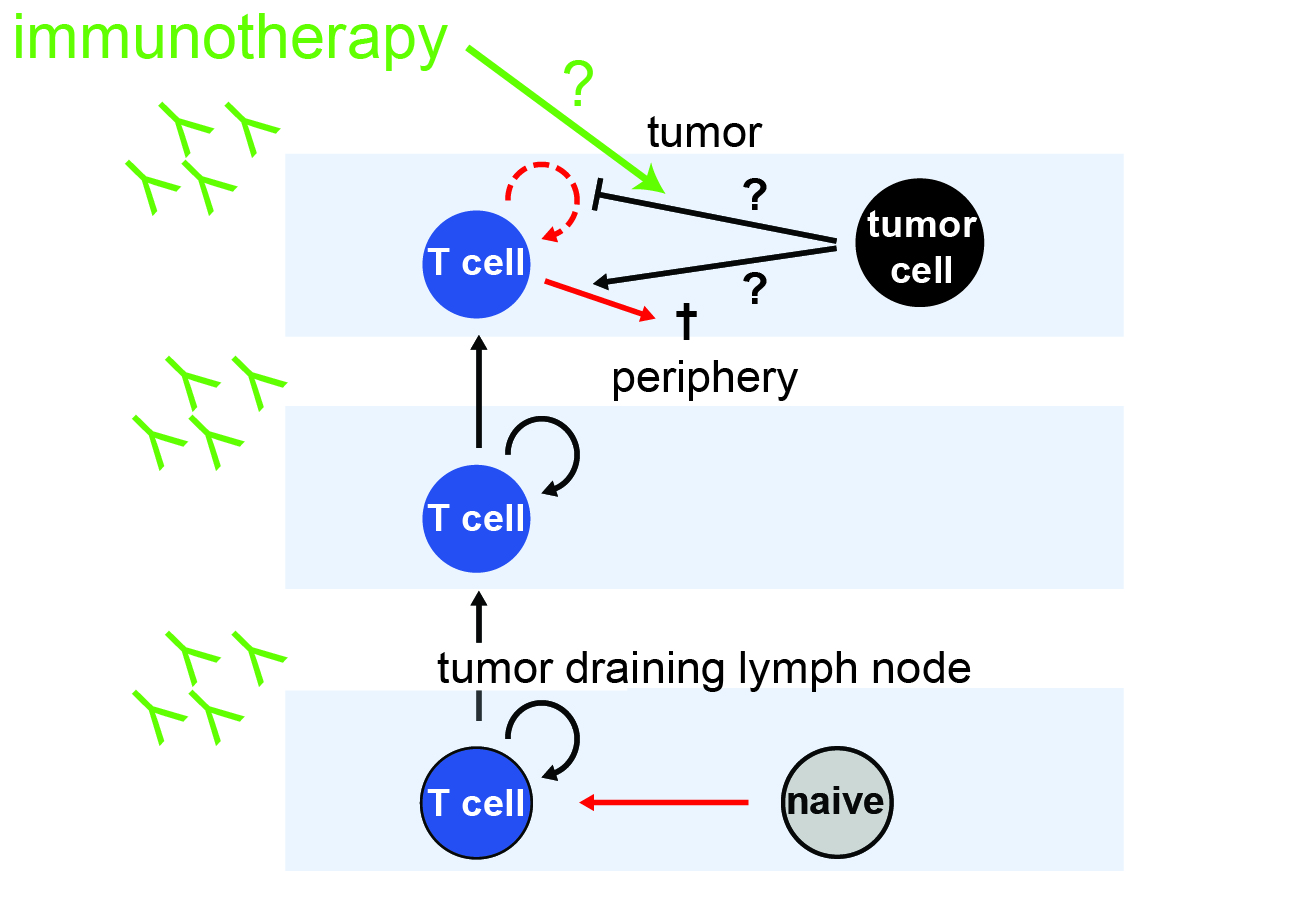SP 2
Data-based mathematical modeling of the anti-tumor T-cell response
There have been tremendous recent advances in the field of cancer immunology and immunotherapy, most notably in the treatment of metastatic melanoma by tumor-infiltrating lymphocyte (TIL) therapy and immunomodulatory antibodies. However, to successfully develop immunotherapy towards a more broadly applicable strategy for the effective treatment of cancer, we require deeper mechanistic insight into T-cell-tumor interactions, informing the definition of biomarkers and the optimization of treatment regimens. Both pre-clinical mouse models and mathematical modeling have been employed – separately – with the aim of elucidating these mechanisms.

During a regular immune response to an ongoing infection, T cells become activated, expand vigorously and migrate to the inflamed tissue to kill the cells that have been invaded by a pathogen. There are also tumor-specific T cells – however, their response to the tumor is often heavily inhibited by mechanisms that are largely unknown. In this part of the project we will employ mathematical modeling based on extensive data to elucidate these interactions quantitatively. We will also investigate the quantitative effect of several immunotherapeutic agents on the tumor-T-cell interactions with the goal to optimize treatment.
In the TIL-REP consortium, we aim to bridge this gap between theory and experiment. We will build a data-driven predictive mathematical model of the TIL-mediated anti-tumor response and – informed by our mechanistic insights – statistically analyze T cell receptor gene profiling data to identify prognostic biomarkers. The starting point for our analysis will be a mathematical model recently developed by us, which describes the dynamics of cytotoxic T-cell subset differentiation and proliferation in response to an acute infection. The model will be tested and parameterized based on extensive kinetic measurements in a mouse model of melanoma. Moreover, we will integrate the quantitative effect of immunomodulatory antibodies into the model and predict possible optimal treatment combinations that we will test in additional experiments. Finally, we will adapt the mathematical model to a mouse model of pancreatic cancer, simulate treatment regimens and compare them with the insights from the melanoma simulations.
Keywords: tumor-infiltrating lymphocytes, immunotherapy, T-cell receptor repertoire, next-generation sequencing, pancreatic cancer, melanoma, vaccination, immuno-stimulatory antibodies



